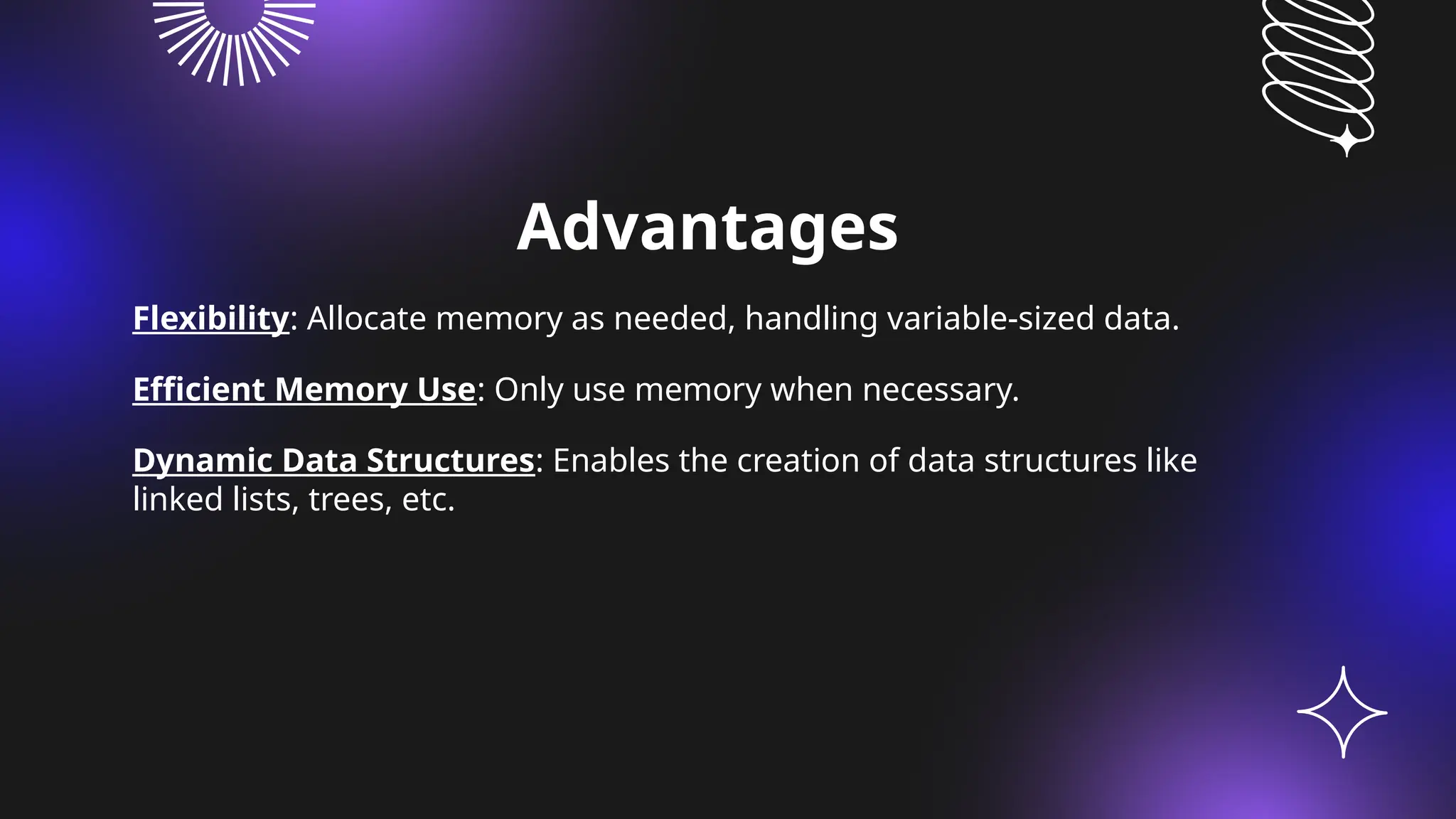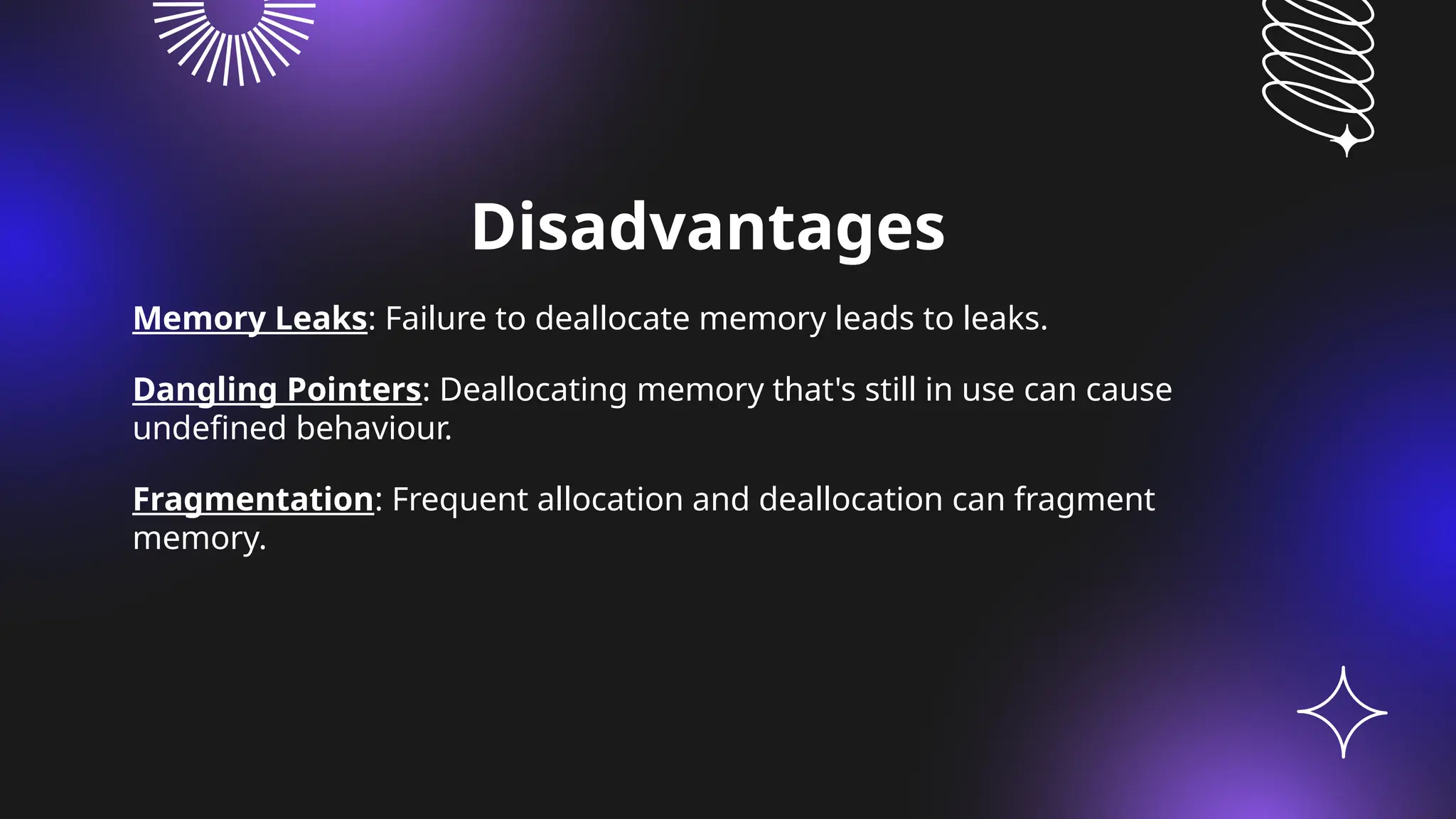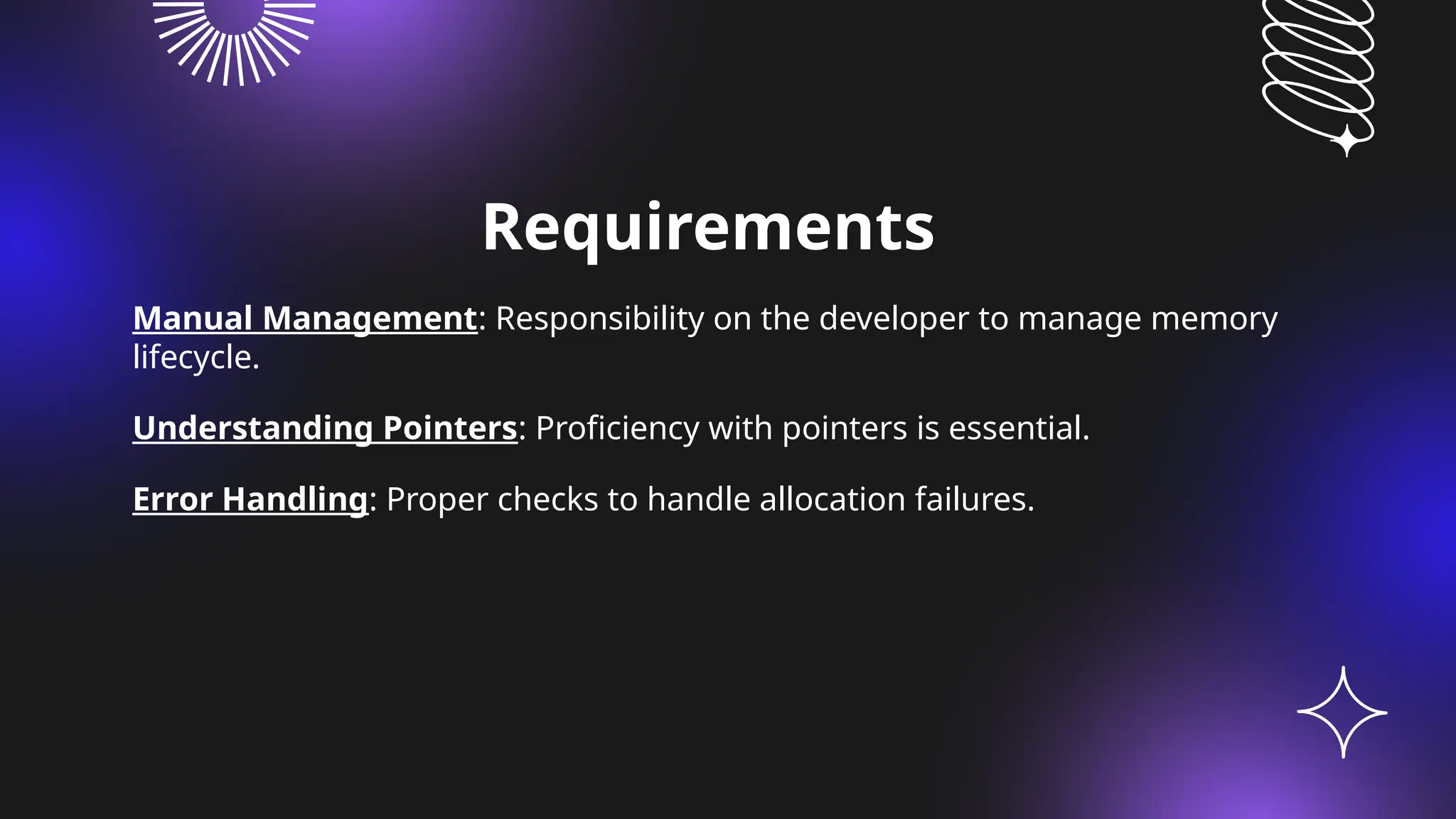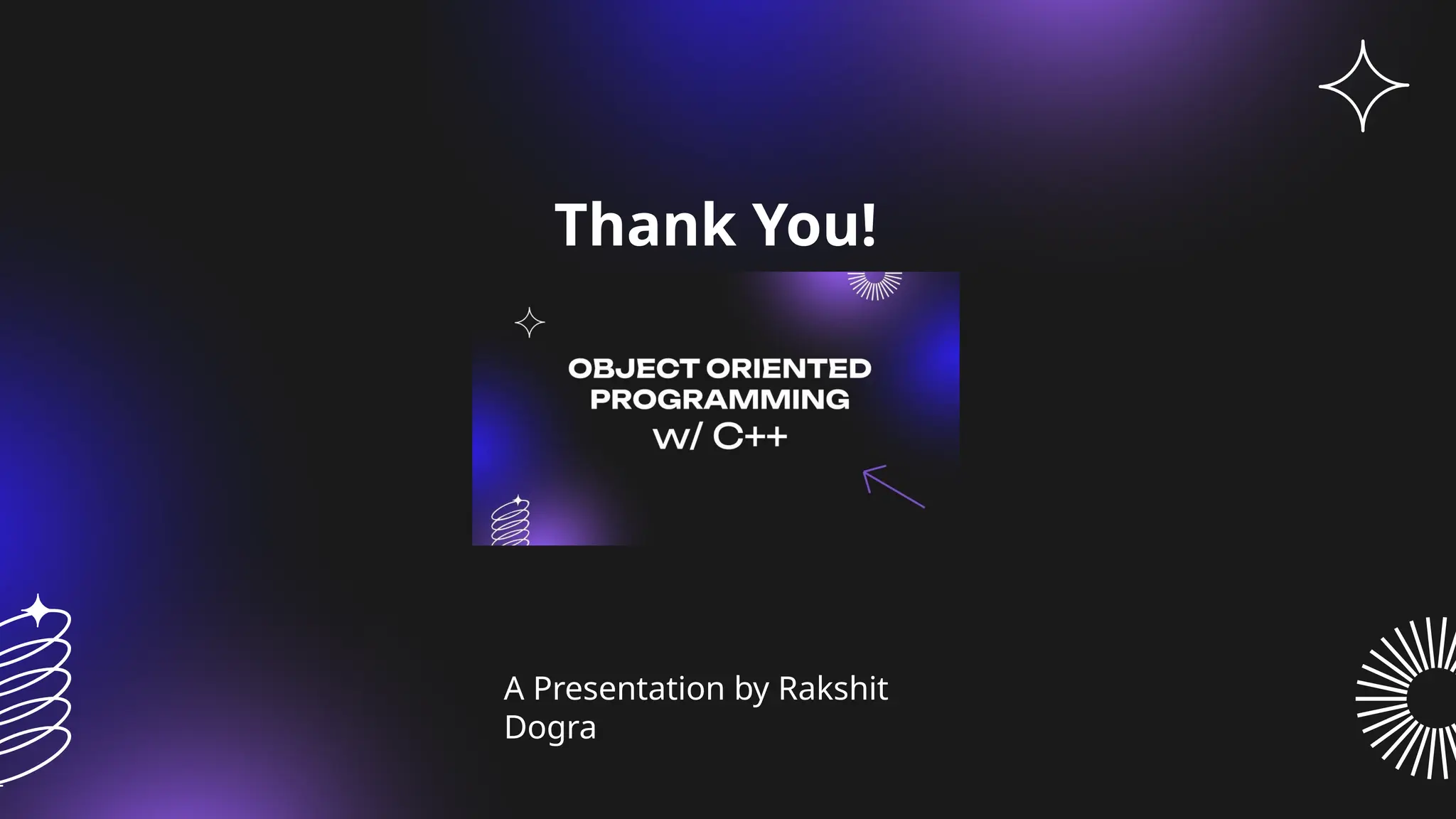The document discusses object-oriented programming in C++, focusing on the identity and behaviour of objects, garbage collection, and dynamic memory allocation. It explains the unique characteristics that define objects, the need for manual memory management in C++, and the advantages and disadvantages of dynamic memory allocation. Additionally, it highlights how classes and destructors manage memory and resources effectively.
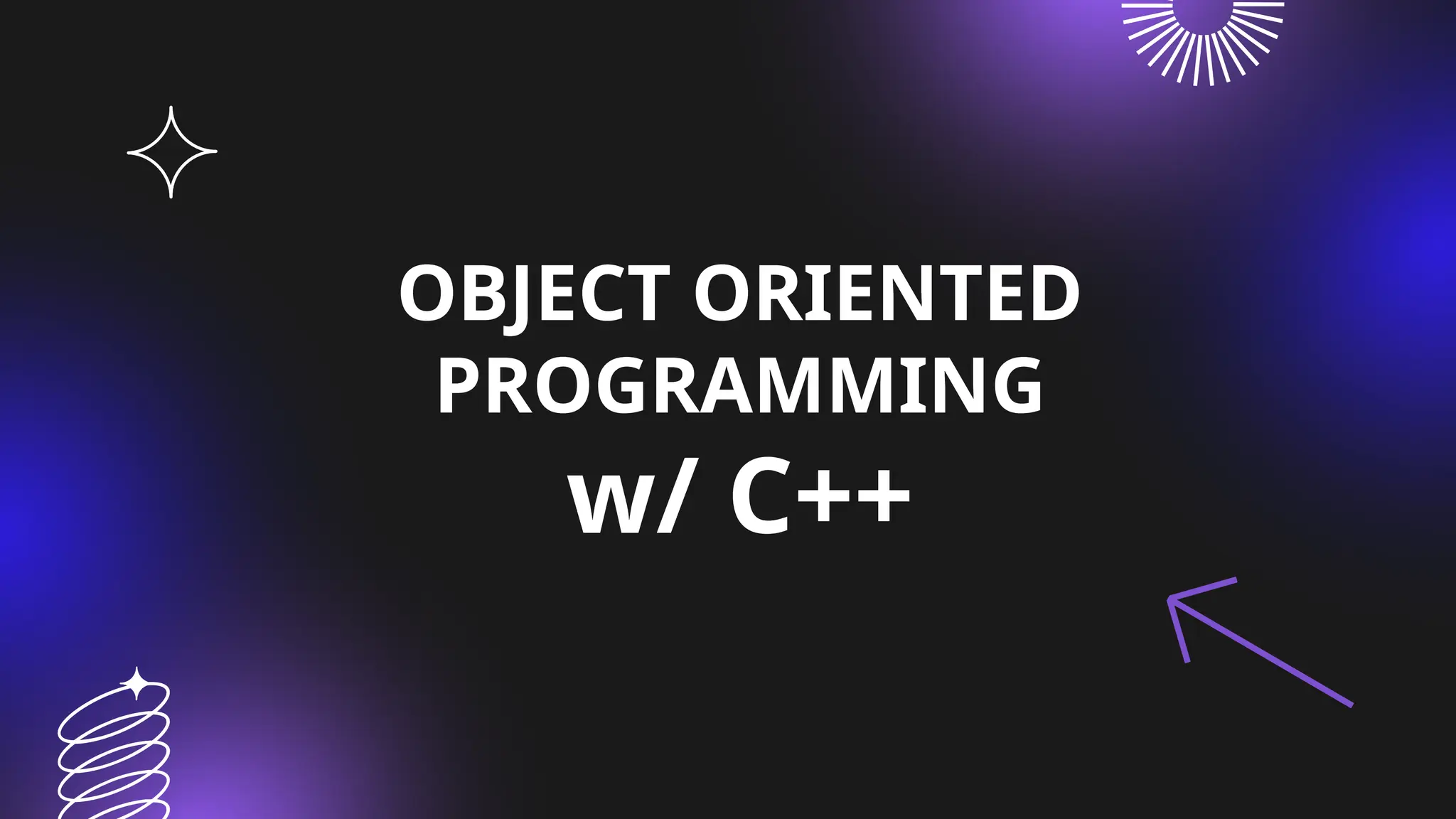
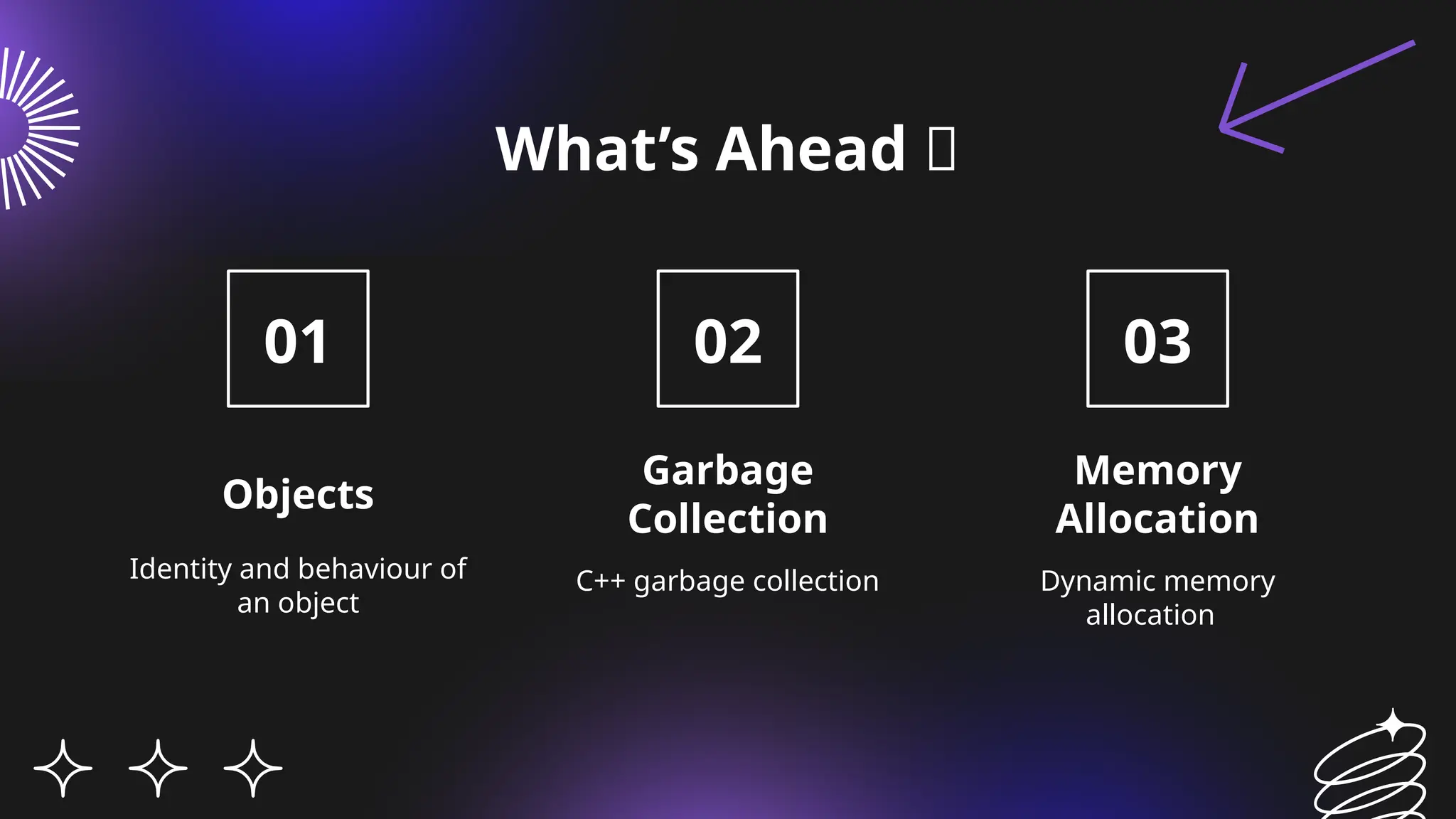

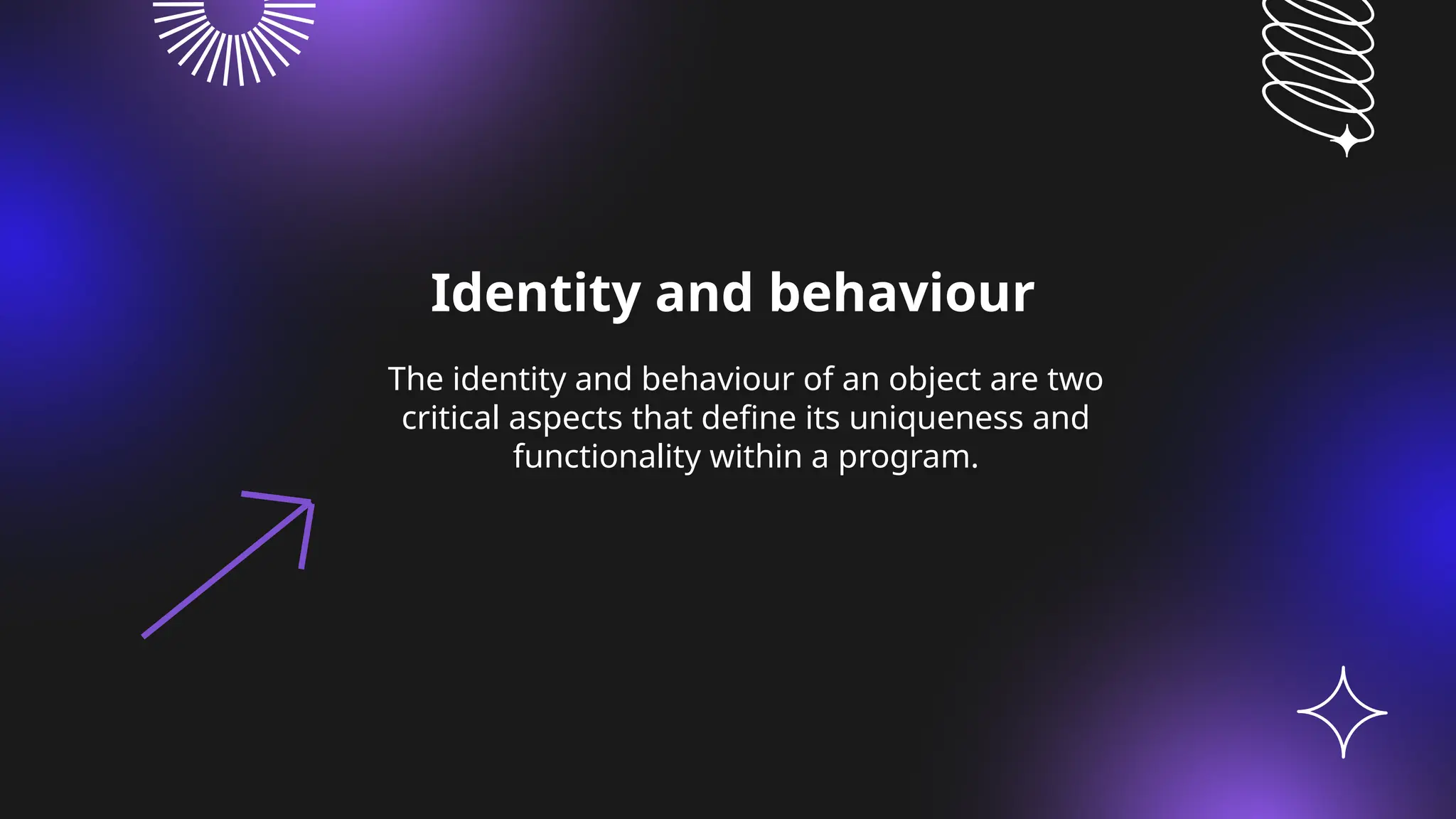
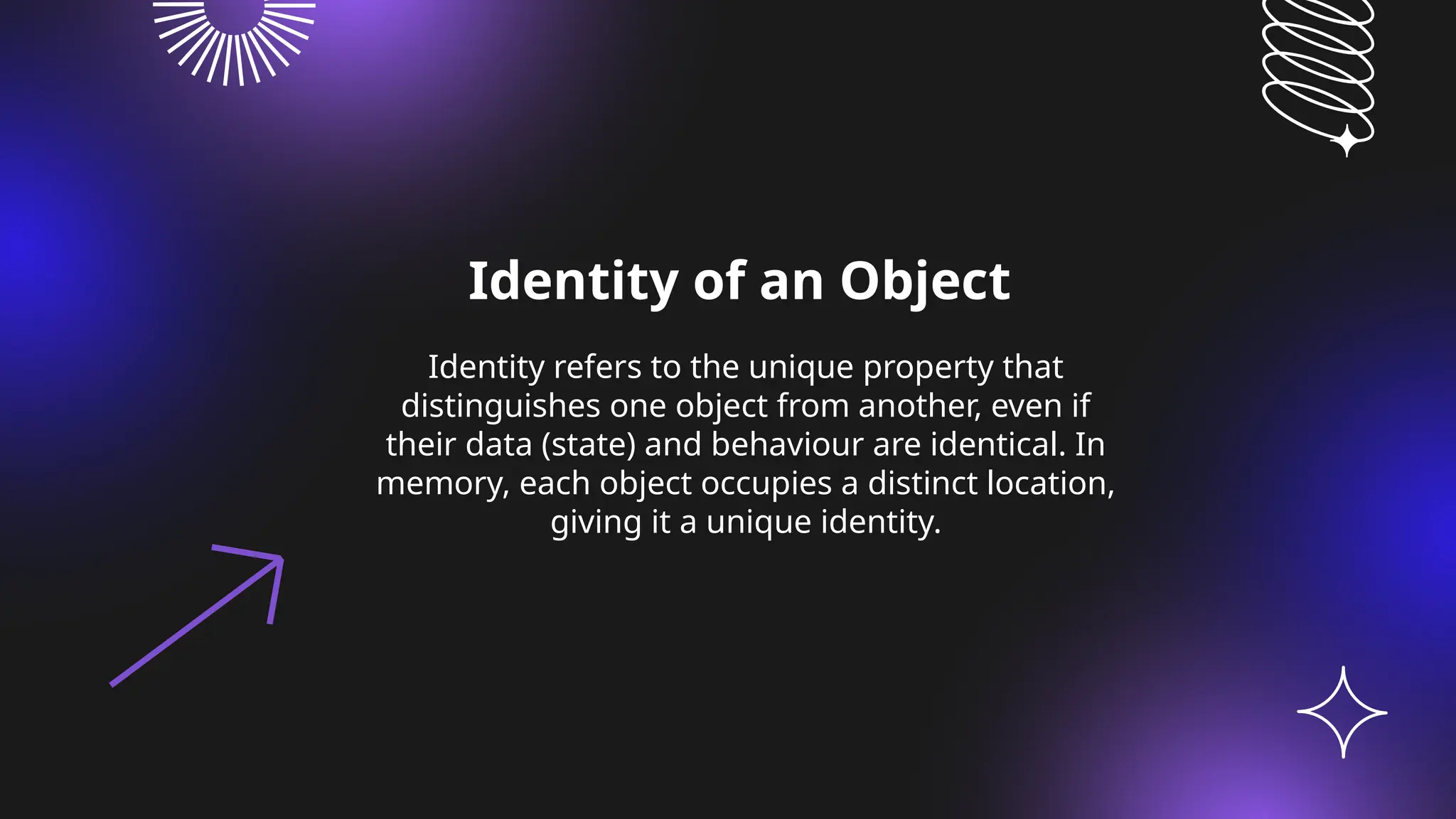
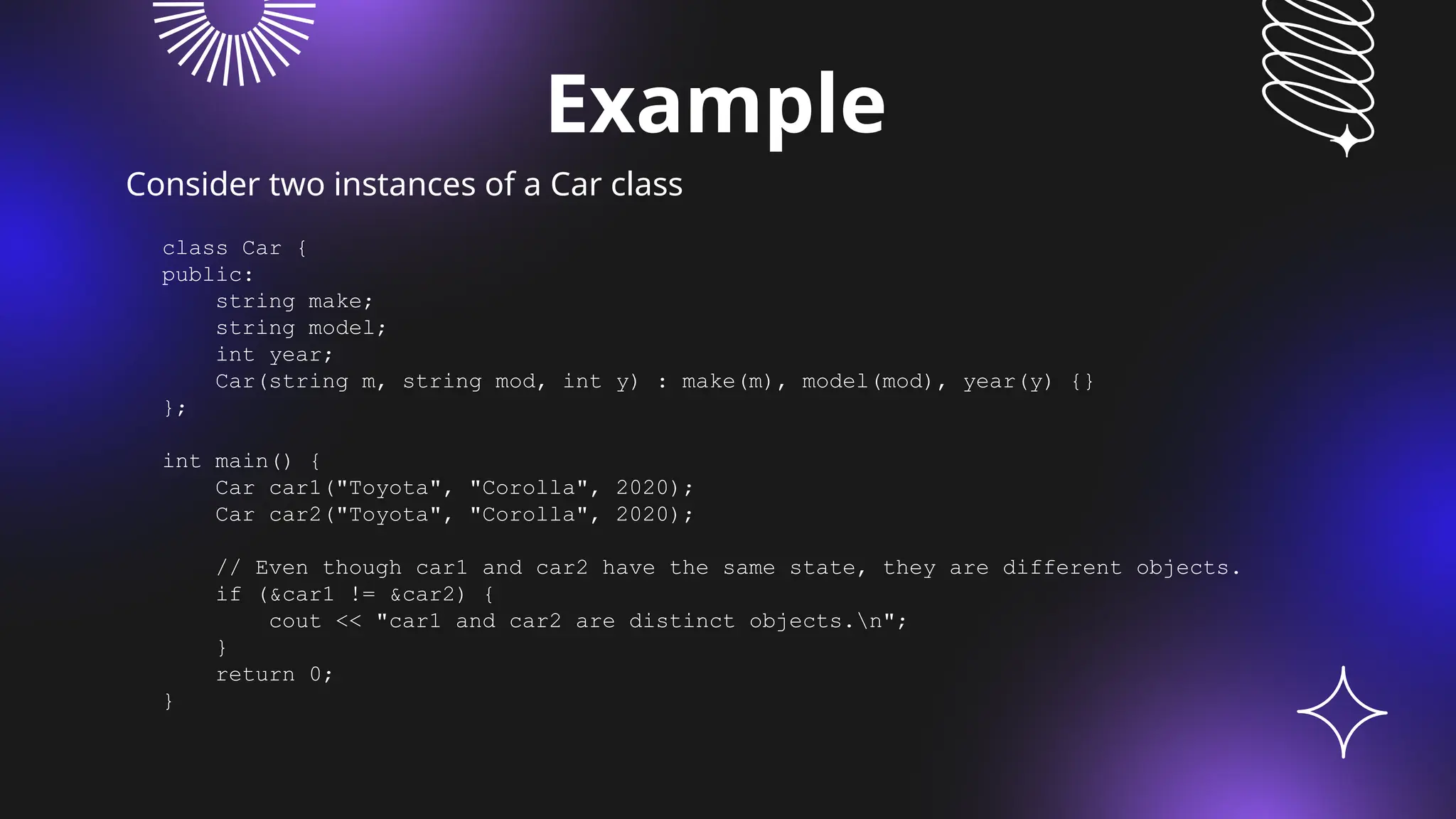
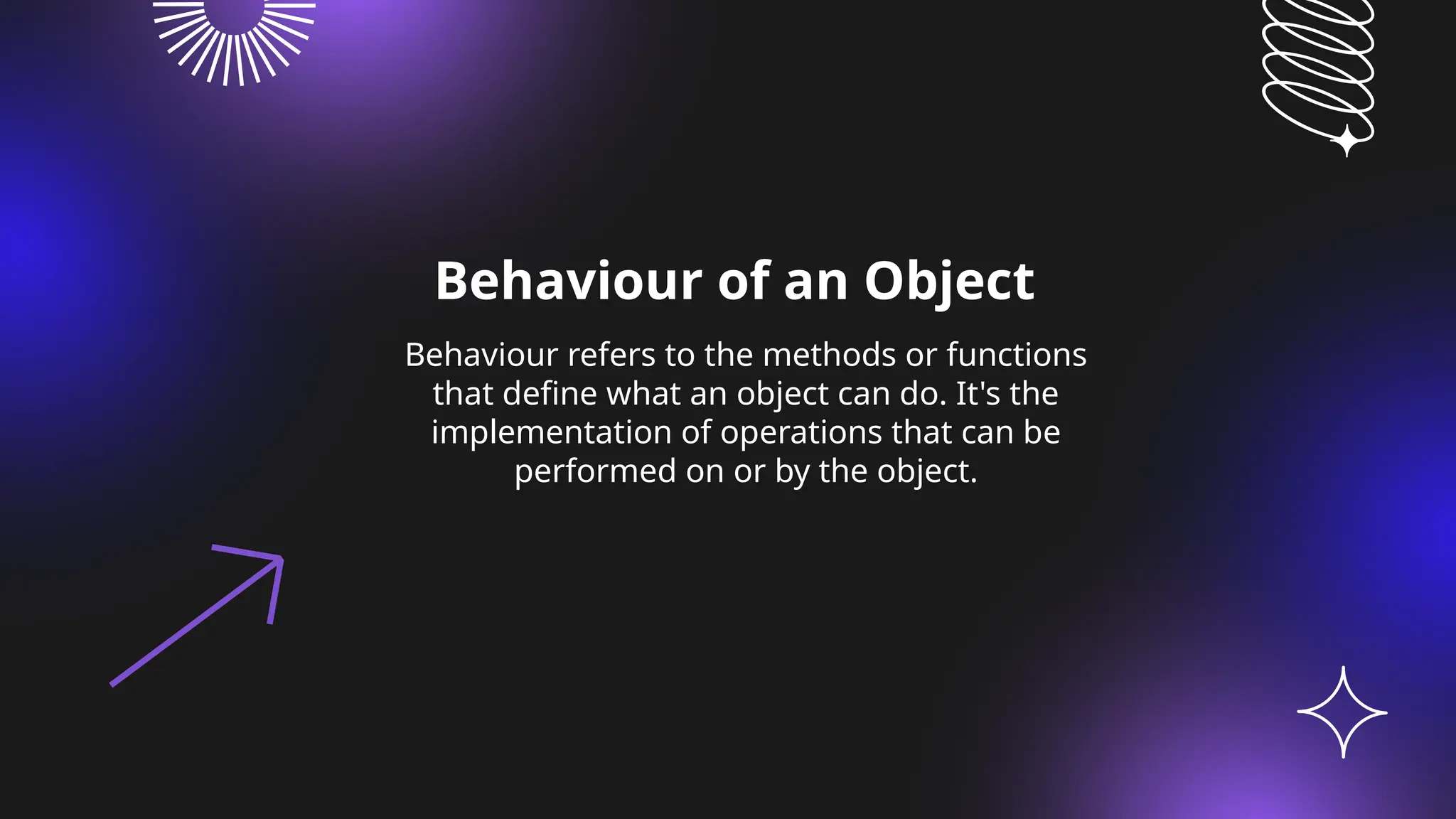
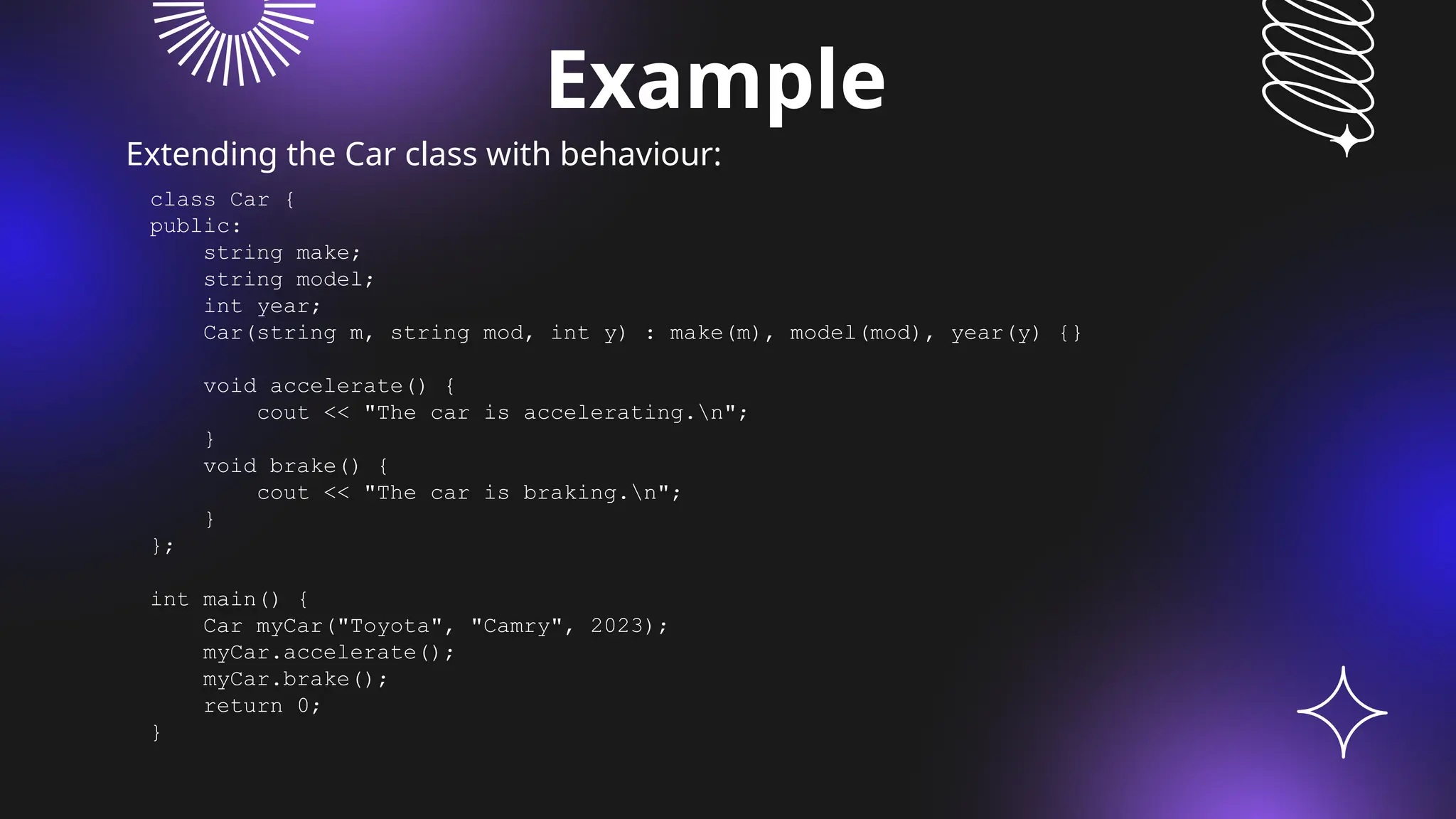
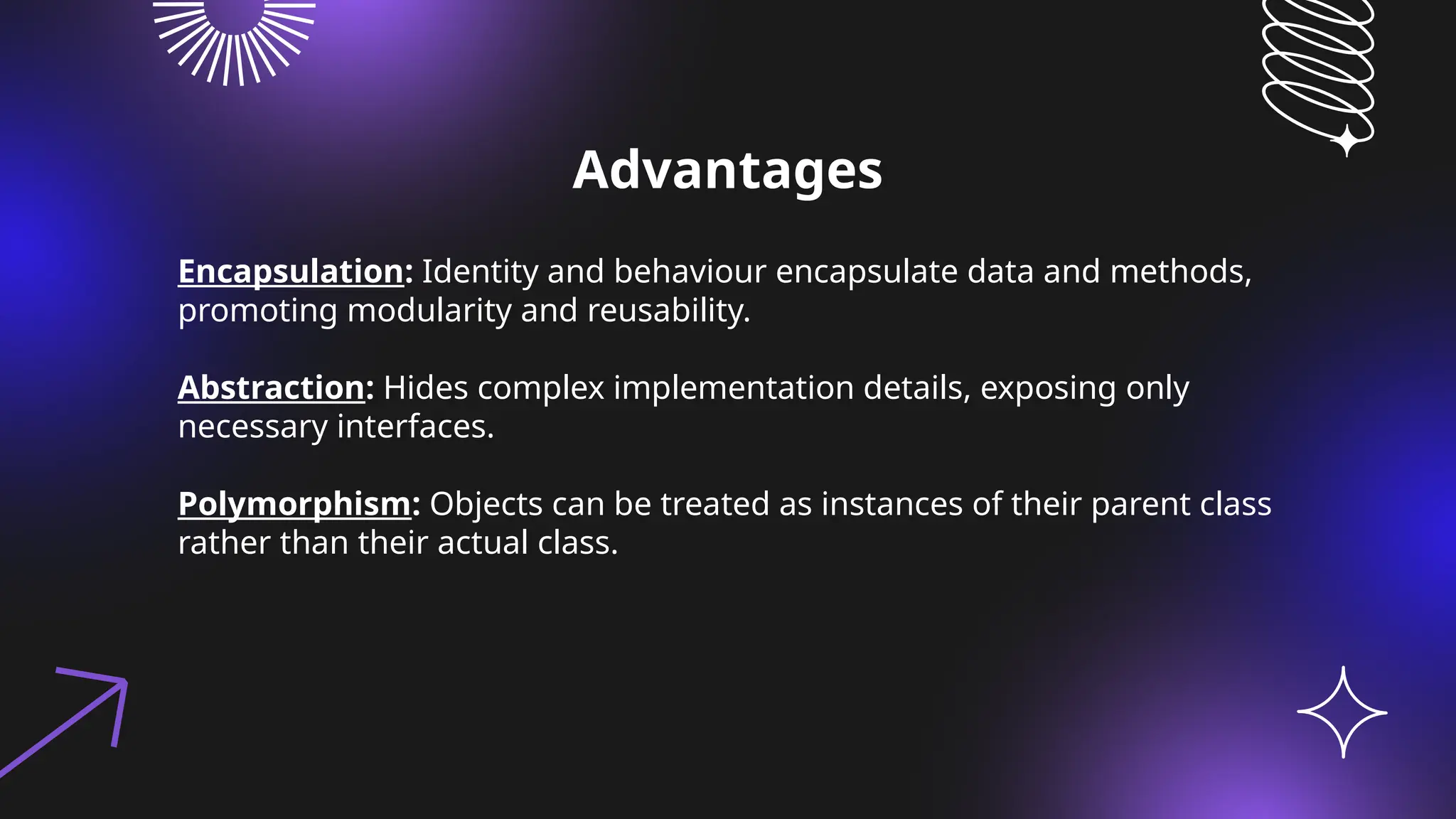
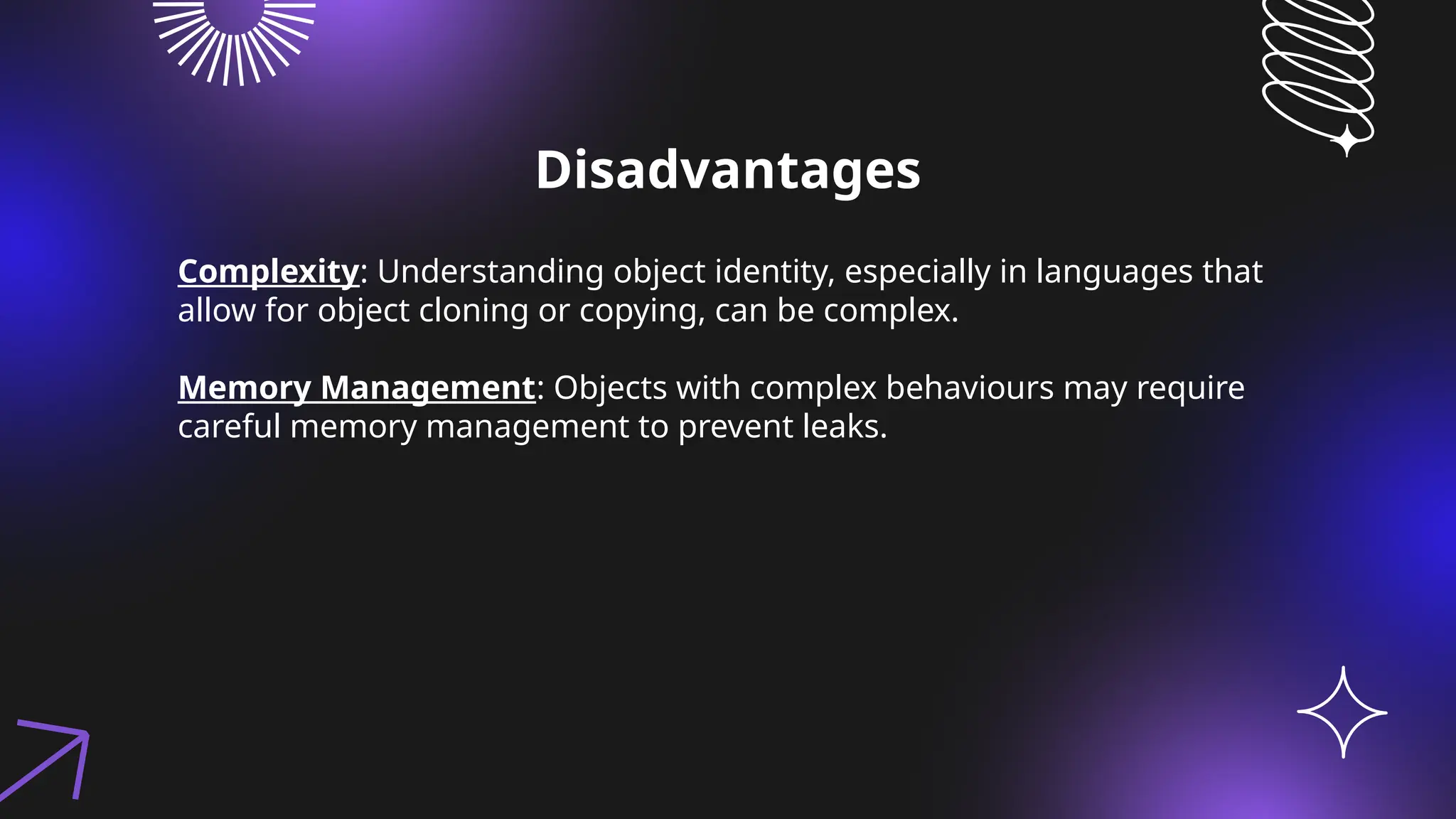

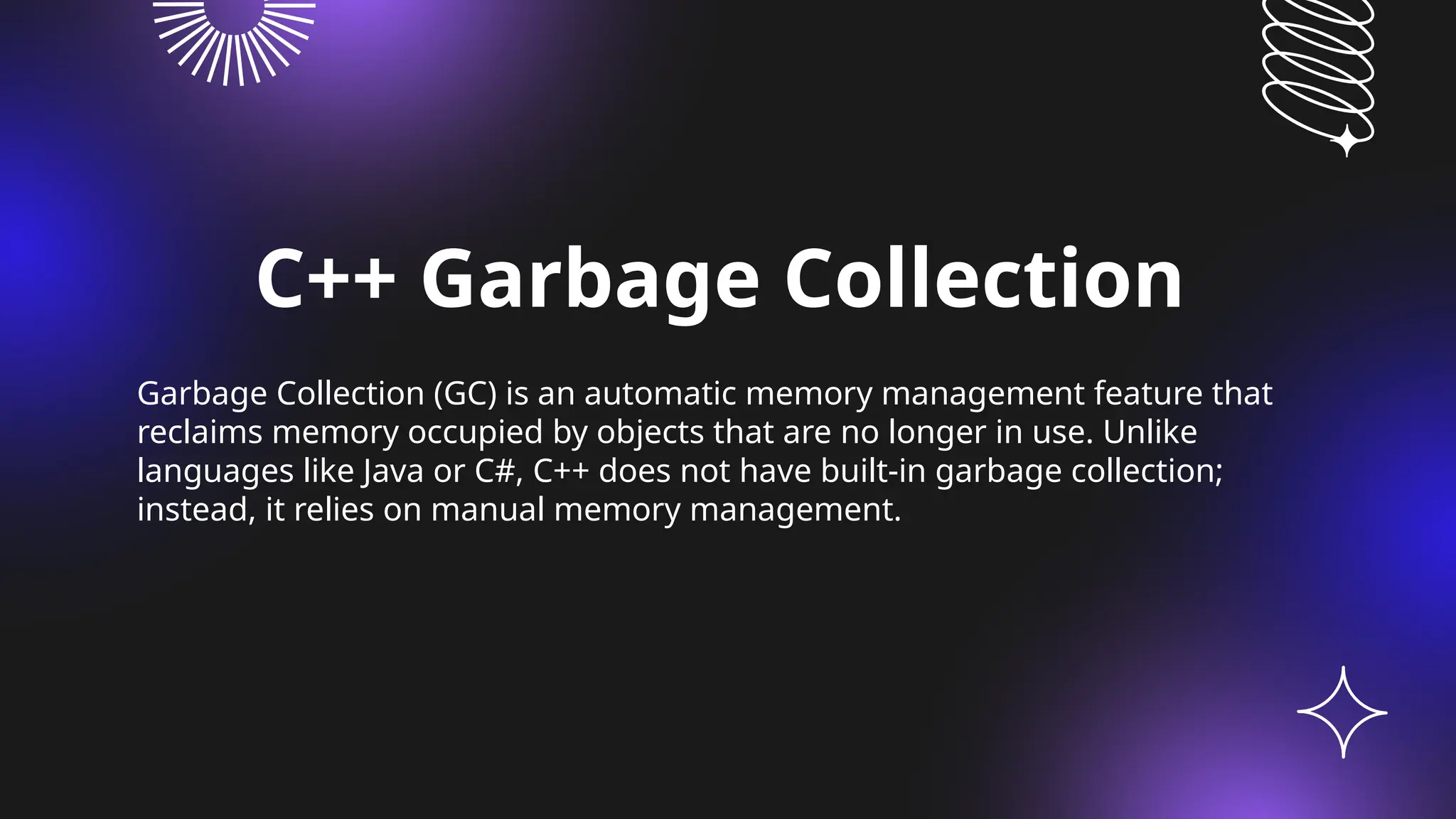
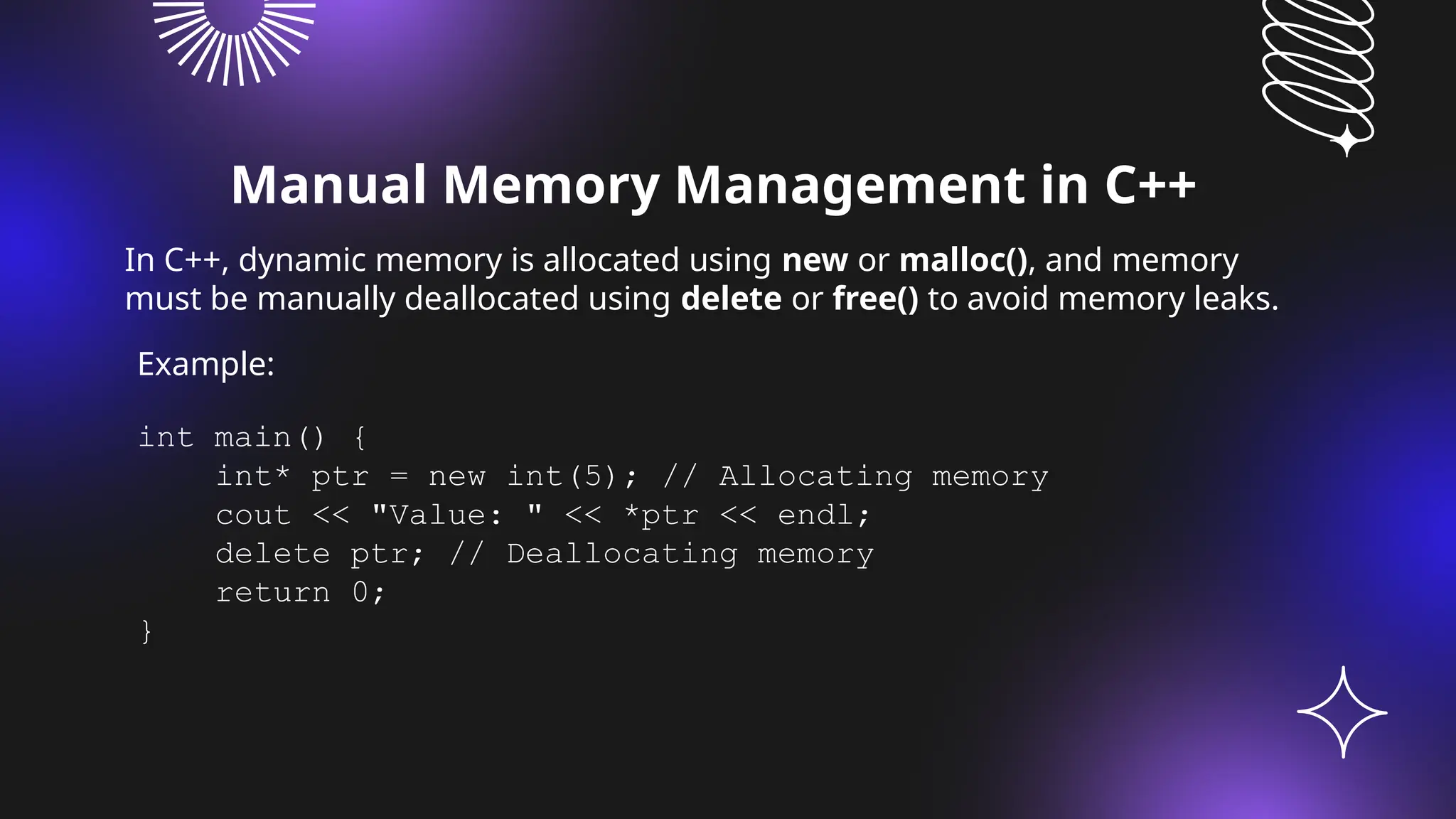
![Destructors for garbage collection
Object Creation: When you create an object, memory is allocated for it on
the heap.
Object Usage: The object is used throughout its lifetime.
Object Destruction: When the object goes out of scope (e.g., when a
function returns or a block ends), its destructor is called.
Resource Cleanup: The destructor typically performs tasks like:
● Deallocating dynamically allocated memory using delete or delete[].
● Closing files or network connections.
● Releasing other resources.](https://image.slidesharecdn.com/objectorientedprogrammingwcbyrakshitdogra1-241214074637-e221c21f/75/OBJECT-ORIENTED-PROGRAMMING-using-C-CPP-14-2048.jpg)
![Example
class MyClass {
public:
MyClass() {
std::cout << "Constructor calledn";
data = new int[10];
}
~MyClass() {
std::cout << "Destructor calledn";
delete[] data;
}
private:
int* data;
};
int main() {
MyClass obj; // Object created on the heap
// ... use obj ...
return 0; // obj goes out of scope, destructor is called
}
Here, the destructor is responsible for deleting the dynamically allocated array data. If the
destructor wasn't called, the memory would be leaked, leading to potential memory issues.](https://image.slidesharecdn.com/objectorientedprogrammingwcbyrakshitdogra1-241214074637-e221c21f/75/OBJECT-ORIENTED-PROGRAMMING-using-C-CPP-15-2048.jpg)

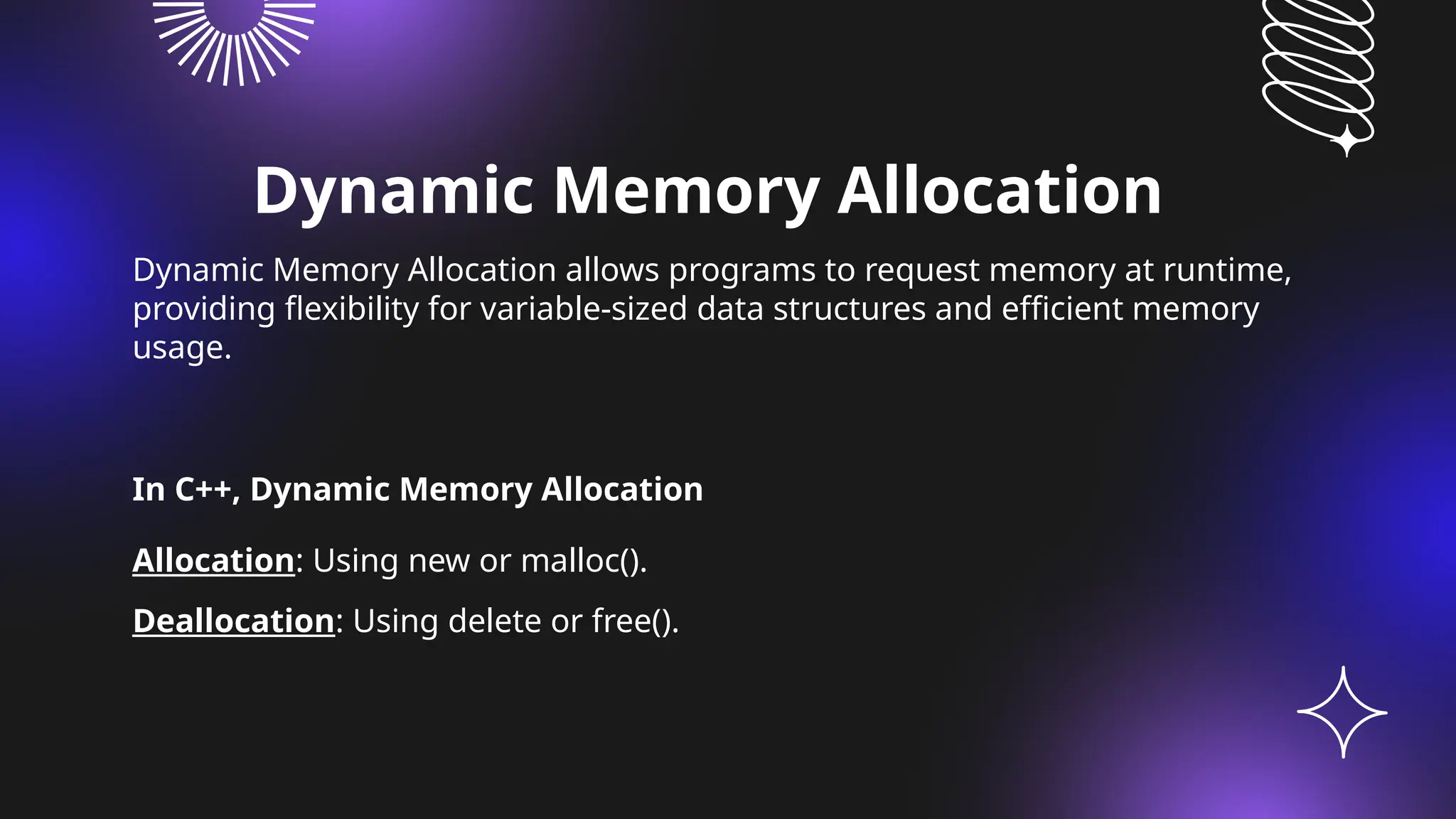
![Example
int* arr = new int[10]; // Allocate array of 10 integers
// Use arr
delete[] arr; // Deallocate memory
Example with new and delete:](https://image.slidesharecdn.com/objectorientedprogrammingwcbyrakshitdogra1-241214074637-e221c21f/75/OBJECT-ORIENTED-PROGRAMMING-using-C-CPP-18-2048.jpg)
